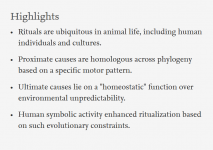David Baxter PhD
Late Founder
Dogs Show The Way On OCD
Dogs With Obsessive Compulsive Disorder Help Find Ways To Treat People With It
BOSTON, Oct. 14, 2007 (CBS) -- To look at Arlo Katie Block's year-and-a-half-old Cavalier King Charles Spaniel, it's hard to believe that not so long ago he was a deeply disturbed puppy. He chased his tail and bit his ears incessantly.
"It was like somebody being in pain and not being able to control themselves," she told CBS News correspondent Richard Schlesinger "It was painful."
The Block family tried everything from training classes to distractions, but nothing worked, until their vet suggested taking Arlo to Dr. Nicholas Dodman, an animal behaviorist.
Dogs like Arlo can get OCD or Obsessive Compulsive Disorder, just like humans, according to Dr. Dodman of Tufts University Veterinary School outside of Boston. He has seen all varieties of it. "I mean, you wonder, why is your life consumed with this pointless mindless repetition?" he said.
Dodman has treated a lot of dogs for a lot of problems. Often, if a bit of training doesn't help he opens the medicine cabinet. Dodman frequently relies on medications like Prozac, developed for humans, that also help dogs. And now dogs might be ready to return the favor.
Dodman and medical researchers at the University of Massachusetts and MIT are looking for specific genes found in dogs and humans to discover the cause of OCD.
"And we're looking at these candidate genes here," he said. "And we're all working it together, sort of trying find this needle in a haystack."
Dr. Edward Ginns is a neurologist at the University of Massachusetts and has been studying the DNA of some of Dr. Dodman's patients with Obsessive Compulsive Disorder.
"There's a new way to approach, not only the diagnosis, but also treatment of these illnesses, both for the humans and for the dogs," Ginns said.
Researchers believe they'll find the gene soon.
"And we should have the results, the first results, by the end of 2007," Dodman said. "We're also going to look after that."
Patients with four legs, like Arlo, could benefit first. But treatments for humans might not be very far behind. The beauty is, everybody wins.
"Well, we're all mammals in this together," Dodman said. "We've got to stick together."
Dogs With Obsessive Compulsive Disorder Help Find Ways To Treat People With It
BOSTON, Oct. 14, 2007 (CBS) -- To look at Arlo Katie Block's year-and-a-half-old Cavalier King Charles Spaniel, it's hard to believe that not so long ago he was a deeply disturbed puppy. He chased his tail and bit his ears incessantly.
"It was like somebody being in pain and not being able to control themselves," she told CBS News correspondent Richard Schlesinger "It was painful."
The Block family tried everything from training classes to distractions, but nothing worked, until their vet suggested taking Arlo to Dr. Nicholas Dodman, an animal behaviorist.
Dogs like Arlo can get OCD or Obsessive Compulsive Disorder, just like humans, according to Dr. Dodman of Tufts University Veterinary School outside of Boston. He has seen all varieties of it. "I mean, you wonder, why is your life consumed with this pointless mindless repetition?" he said.
Dodman has treated a lot of dogs for a lot of problems. Often, if a bit of training doesn't help he opens the medicine cabinet. Dodman frequently relies on medications like Prozac, developed for humans, that also help dogs. And now dogs might be ready to return the favor.
Dodman and medical researchers at the University of Massachusetts and MIT are looking for specific genes found in dogs and humans to discover the cause of OCD.
"And we're looking at these candidate genes here," he said. "And we're all working it together, sort of trying find this needle in a haystack."
Dr. Edward Ginns is a neurologist at the University of Massachusetts and has been studying the DNA of some of Dr. Dodman's patients with Obsessive Compulsive Disorder.
"There's a new way to approach, not only the diagnosis, but also treatment of these illnesses, both for the humans and for the dogs," Ginns said.
Researchers believe they'll find the gene soon.
"And we should have the results, the first results, by the end of 2007," Dodman said. "We're also going to look after that."
Patients with four legs, like Arlo, could benefit first. But treatments for humans might not be very far behind. The beauty is, everybody wins.
"Well, we're all mammals in this together," Dodman said. "We've got to stick together."






